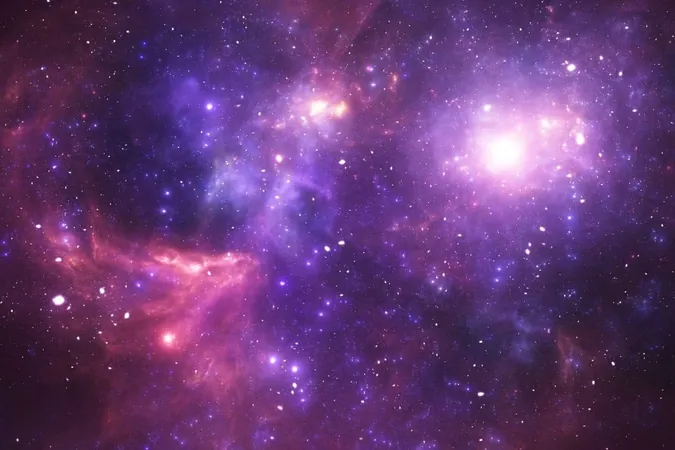
Are 'Dead' Galaxies Secretly Birthing New Stars?
2025-04-15
Author: Yan
Astounding Discovery: Galaxies Defying Death!
In a jaw-dropping revelation, astronomers have found that some galaxies, once believed to be done with star formation, are surprisingly giving birth to new stars. This groundbreaking theory introduces a thrilling new category: red star-forming galaxies, a concept proposed by Charles Steinhardt, an astrophysicist at the University of Missouri.
Rethinking Galaxy Classifications
Historically, the cosmos has been divided into two types of galaxies: blue ones brimming with youthful, vibrant star activity, and their older, inactive red counterparts. However, Steinhardt’s findings throw this binary classification into chaos. He posits that certain red galaxies are still actively forming stars—defying all expectations.
"These red star-forming galaxies mostly generate low-mass stars, which gives them their distinct hue while still being in the throes of star birth," explains Steinhardt.
A Universe Full of Stars: Revisited
Published in the Astrophysical Journal, this theory could drastically reshape our understanding of star formation across the universe. If true, these red star-forming galaxies may actually account for a considerable fraction of the stellar mass we observe today, suggesting that earlier estimates about star formation rates in the early universe could have been vastly underestimated.
Steinhardt states, "This theory addresses the discrepancies in the observed ratios of black hole mass to stellar mass, as well as the differing initial mass functions in blue and red galaxies—issues that aging or mergers alone couldn't elucidate. Most of the stars we see might have formed under completely different conditions than we previously assumed."
Rethinking Post-Starburst Galaxies
A particularly intriguing group of galaxies known as post-starburst galaxies may also be impacted by this new framework. Previously considered remnants of galactic mergers following a brief, explosive star formation period, Steinhardt now suggests these galaxies may have been quietly forming petite, red stars all along.
According to reports from SciTechDaily, "If that’s the case, we may need to revise our definition of post-starburst galaxies, as some might actually fit into this new category of red star-forming galaxies."
A Future Rich with Research
While this theory is still gaining traction, upcoming research is set to put its claims to the test. At the University of Missouri, enterprising students are already on the case. Junior Mathieux Harper and his team of undergraduates are gathering evidence to bolster Steinhardt’s assertions.
Meanwhile, sophomores Carter Meyerhoff and Zach Borowiak are diving into data from the European Space Agency’s Gaia satellite, which has painstakingly mapped over two billion stars in our Milky Way.
A Revolutionary Perspective on the Universe
The existence of these red galaxies that are still birthing stars fundamentally shifts how scientists view the life cycle of galaxies. Steinhardt concludes, "This could mean the universe has generated significantly more stars than we ever realized, reinforcing the idea that the life cycle of galaxies is intricate rather than a straightforward transition from blue to red and dead."



 Brasil (PT)
Brasil (PT)
 Canada (EN)
Canada (EN)
 Chile (ES)
Chile (ES)
 Česko (CS)
Česko (CS)
 대한민국 (KO)
대한민국 (KO)
 España (ES)
España (ES)
 France (FR)
France (FR)
 Hong Kong (EN)
Hong Kong (EN)
 Italia (IT)
Italia (IT)
 日本 (JA)
日本 (JA)
 Magyarország (HU)
Magyarország (HU)
 Norge (NO)
Norge (NO)
 Polska (PL)
Polska (PL)
 Schweiz (DE)
Schweiz (DE)
 Singapore (EN)
Singapore (EN)
 Sverige (SV)
Sverige (SV)
 Suomi (FI)
Suomi (FI)
 Türkiye (TR)
Türkiye (TR)
 الإمارات العربية المتحدة (AR)
الإمارات العربية المتحدة (AR)